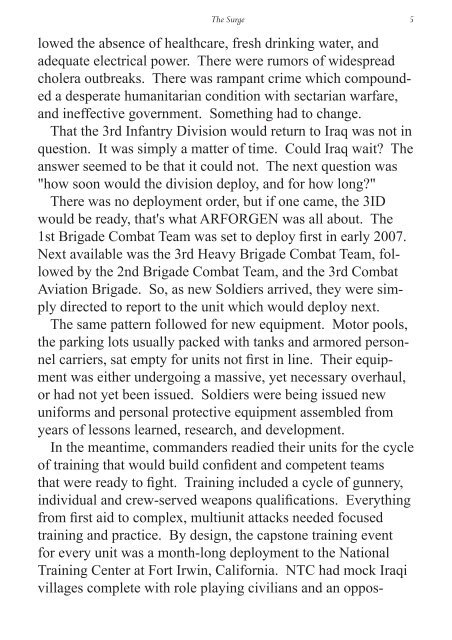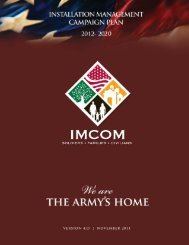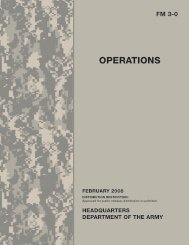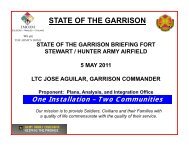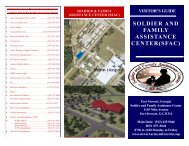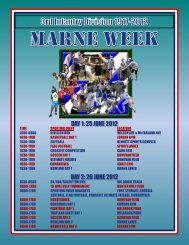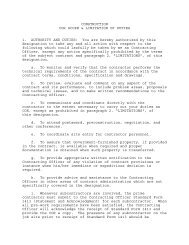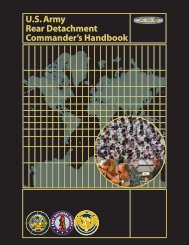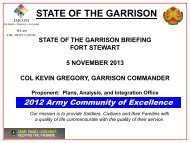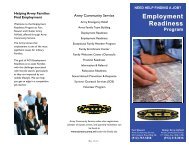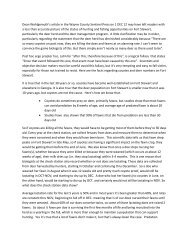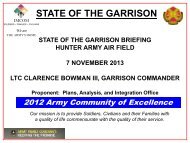3rd Infantry Division Operations - Fort Stewart - U.S. Army
3rd Infantry Division Operations - Fort Stewart - U.S. Army
3rd Infantry Division Operations - Fort Stewart - U.S. Army
Create successful ePaper yourself
Turn your PDF publications into a flip-book with our unique Google optimized e-Paper software.
The Surge 5<br />
lowed the absence of healthcare, fresh drinking water, and<br />
adequate electrical power. There were rumors of widespread<br />
cholera outbreaks. There was rampant crime which compounded<br />
a desperate humanitarian condition with sectarian warfare,<br />
and ineffective government. Something had to change.<br />
That the <strong>3rd</strong> <strong>Infantry</strong> <strong>Division</strong> would return to Iraq was not in<br />
question. It was simply a matter of time. Could Iraq wait? The<br />
answer seemed to be that it could not. The next question was<br />
"how soon would the division deploy, and for how long?"<br />
There was no deployment order, but if one came, the 3ID<br />
would be ready, that's what ARFORGEN was all about. The<br />
1st Brigade Combat Team was set to deploy first in early 2007.<br />
Next available was the <strong>3rd</strong> Heavy Brigade Combat Team, followed<br />
by the 2nd Brigade Combat Team, and the <strong>3rd</strong> Combat<br />
Aviation Brigade. So, as new Soldiers arrived, they were simply<br />
directed to report to the unit which would deploy next.<br />
The same pattern followed for new equipment. Motor pools,<br />
the parking lots usually packed with tanks and armored personnel<br />
carriers, sat empty for units not first in line. Their equipment<br />
was either undergoing a massive, yet necessary overhaul,<br />
or had not yet been issued. Soldiers were being issued new<br />
uniforms and personal protective equipment assembled from<br />
years of lessons learned, research, and development.<br />
In the meantime, commanders readied their units for the cycle<br />
of training that would build confident and competent teams<br />
that were ready to fight. Training included a cycle of gunnery,<br />
individual and crew-served weapons qualifications. Everything<br />
from first aid to complex, multiunit attacks needed focused<br />
training and practice. By design, the capstone training event<br />
for every unit was a month-long deployment to the National<br />
Training Center at <strong>Fort</strong> Irwin, California. NTC had mock Iraqi<br />
villages complete with role playing civilians and an oppos-


